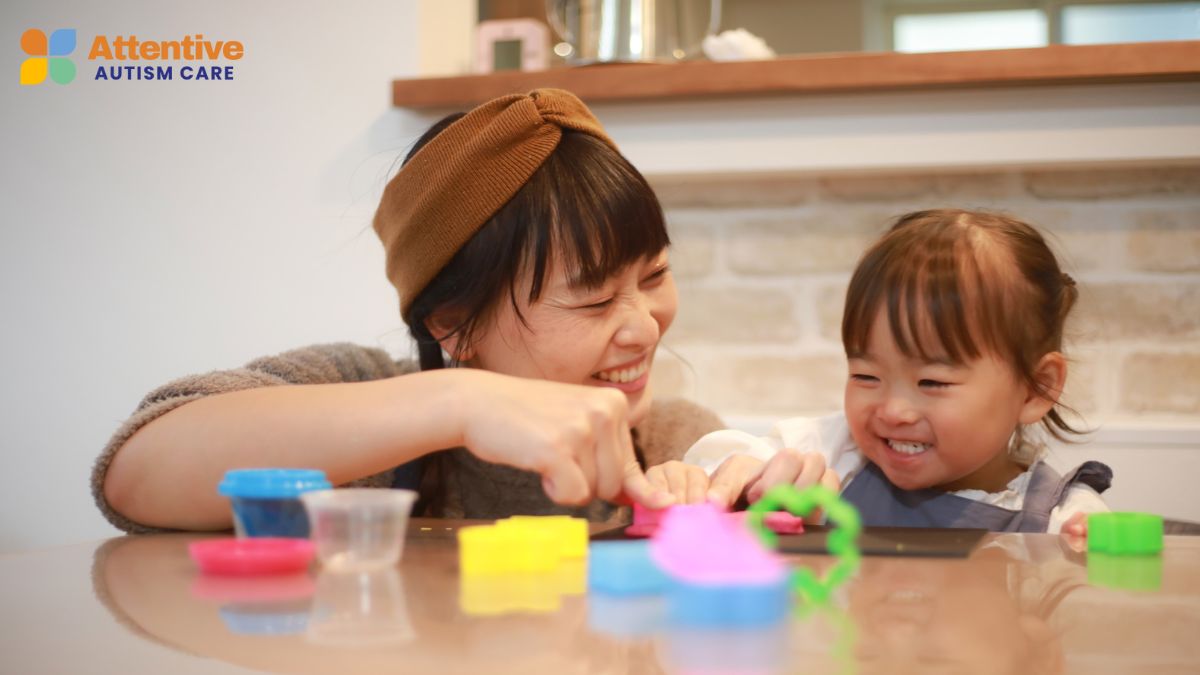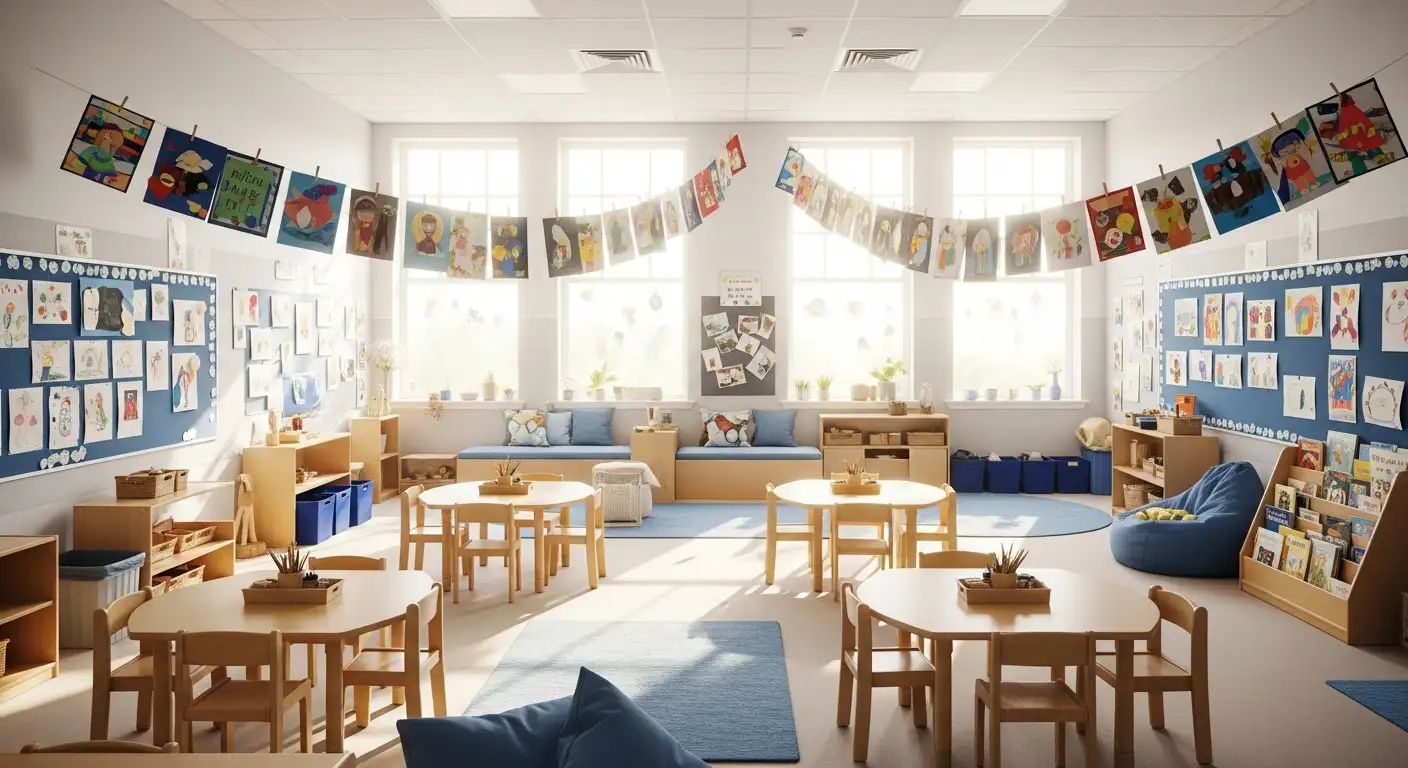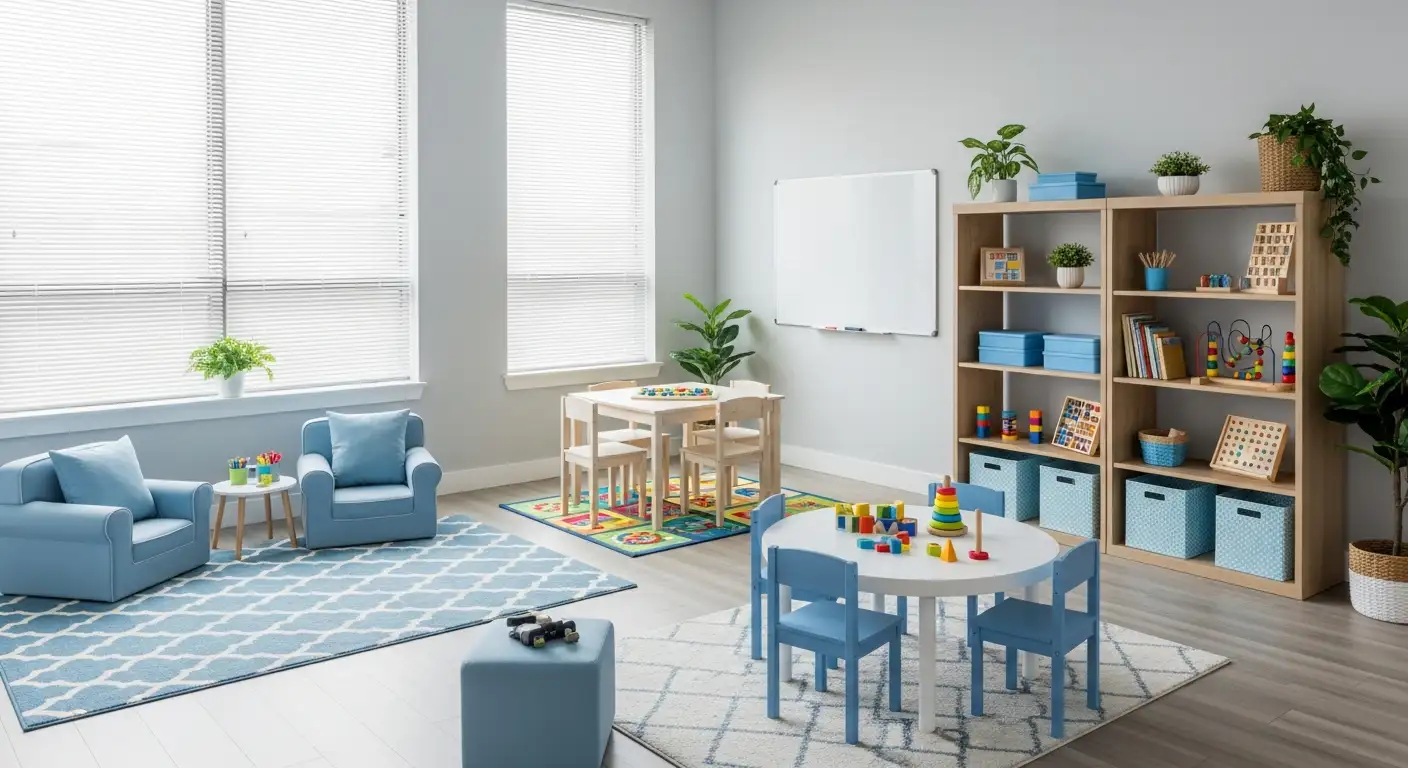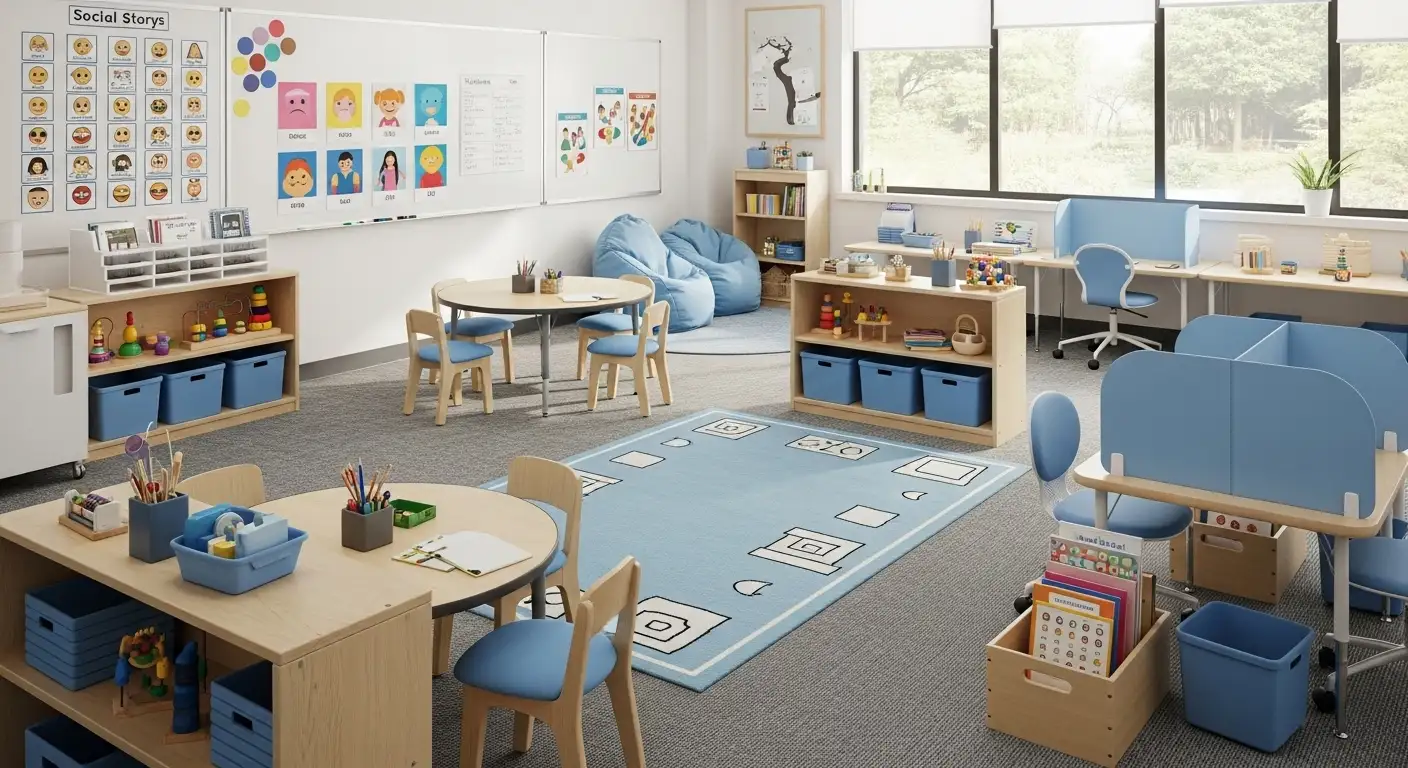Early Signs ABA Can Help: Quick Guide for Parents
The early signs ABA therapy helps include limited gestures, crying, or unsafe behavior. Use this guide to link each red flag to practical ABA goals and actions.

Key Points:
- Early signs like no gestures, crying instead of asking, or unsafe behavior can signal a need for ABA.
- Parents don’t need to wait for a diagnosis to act.
- ABA targets skills like requesting, following directions, and daily routines, turning red flags into teachable moments.
Parents often see something off before anyone gives a diagnosis. A child who will not point, avoids routines, or runs off without warning can keep the whole house on alert. Early applied behavior analysis gives families a way to turn those signals into skills instead of waiting for them to grow.
The guide below links each sign to an ABA goal and to a simple parent action so you know when to move from observing to asking for an ABA referral.

What Are the Early Signs ABA Therapy Helps?
The early signs ABA therapy helps with usually sit in three areas: communication, behavior/safety, and learning or daily living. The CDC reports that about 1 in 31 children aged 8 years has been identified with autism, so catching these patterns sooner is practical.
ABA therapy methods break skills into small teachable steps. Families using applied behavior analysis to manage autism symptoms see why it fits early signals so well. When you know the sign, you can match it to an ABA target, then call, document, or ask your pediatrician for an order.
Communication Red Flags ABA Can Target
Communication is usually the first area where parents notice a gap. The key is to ask: Is the child trying to get needs met, or are they quiet, guessing, or crying instead?
Short markers that should move from watching to referral:
- No gestures: The child does not point, wave, or show items.
- No functional requests: The child pulls you to items or cries instead of asking.
- Limited joint attention: The child does not look back and forth between you and the toy.
- Few sounds or words by toddler age: Milestones are late or inconsistent.
How ABA links to the sign:
1. Sign: No gestures.
- ABA target: Build early manding or requesting so the child learns “I ask, I get.”
- Parent action: Write down 3 daily items your child wants and review parent training to support autism interventions so the same requests can be practiced at home.
2. Sign: Crying instead of asking.
- ABA target: Teach picture exchange, pointing, or signing to replace crying.
- Parent action: Bring a list of frequent meltdowns to the intake so the therapist can pick starter words.
3. Sign: Limited joint attention.
- ABA target: Teach turn-taking in autism with toys and looking at faces during play.
- Parent action: Record a short video of play at home so the BCBA can see the current level.
Why ABA now? Early intensive behavioral intervention has shown children can gain about 11 IQ points and around 20 more daily living skills over two years compared to children who did not receive it, so starting while communication is still forming makes sense.
One mention of applied behavior analysis tells insurance and schools that you are asking for an evidence-based model and not a general “communication class.”
Behavior and Safety Red Flags ABA Can Target
Safety is where families should move fastest. Behaviors tied to autism, like aggression, elopement, and self-injury, place the child and caregivers at risk. This is especially true when autism-related behavioral challenges at home show up every day.
A report found that about 59% of individuals with autism engage in self-injury, aggression, or destructive behavior at some point, which means waiting for the condition to go away on its own is risky.
Behaviors that call for ABA rather than observation:
- Aggression toward others: Hitting, biting, pushing when frustrated.
- Elopement: Running from the house, yard, or store without awareness.
- Self-injury: Head hitting, hand biting, or hair pulling.
- Severe tantrums: Long episodes that do not respond to the usual calming tries.
How ABA links to the sign:
1. Sign: Aggression during denied access.
- ABA target: Teach a replacement request and reinforce calm responses. ABA intervention strategies will include functional behavior assessment and planned reinforcement.
- Parent action: Tell the provider what the child wanted right before the hit so they can design the first replacement phrase.
2. Sign: Elopement from stores or parking lots.
- ABA target: Teach stop/wait, pair walking with reinforcement, add safety visuals.
- Parent action: Ask the provider for a home-and-community plan, not clinic-only work. Review autism and safety ABA tips to match the plan to real places.
3. Sign: Self-injury during transitions.
- ABA target: Teach communication for “break” and slowly stretch tolerance.
- Parent action: Track when it happens so the BCBA can see the pattern.
Parents often hear about ABA therapy cost because higher-intensity behavior plans sometimes need more technician hours or BCBA oversight. Asking about funding sources during the first call is practical, as long as safety is in play.

Learning and Daily Living Red Flags ABA Can Target
Some children talk and play but cannot handle basic routines. ABA therapy helps when the child understands but does not follow. That is when families should switch from observation to structured teaching.
Daily living signals:
- Cannot follow 1-step directions: “Sit,” “Come here,” “Give me the ball.”
- Breakdowns during transitions: Moving from iPad to meal causes crying.
- Difficulty with simple routines: Toothbrushing, dressing, going to car seat.
- No play variety: Only lining up toys or watching screens.
How ABA links to the sign:
1. Sign: Cannot follow 1-step directions.
- ABA target: Use task analysis and errorless teaching to get compliance with easy instructions.
- Parent action: Ask the provider to teach 5 core home directions first so you can use them all day.
2. Sign: Meltdowns during transitions.
- ABA target: Teach visual schedules, countdowns, and transition cues.
- Parent action: Request parent training on visual schedules so the same cue is used at home and in the clinic.
3. Sign: Trouble with routines.
- ABA target: Break grooming or dressing into small steps and reinforce each success.
- Parent action: Video one routine and send it to the BCBA so they can script the exact steps for your child.
A 2024 analysis showed that aside from behavior, ABA programs improve social and emotional skills, which means even daily routines can be taught through the same methods.
This is also a good place to ask providers what ABA techniques they plan to use. Many will explain discrete trial training for new skills and naturalistic teaching for daily routines so generalization happens faster.
When Should Parents Call a Provider for an ABA Referral?
Parents should call when a sign repeats across days or settings. If a child cannot request at home and daycare reports the same problem, that is enough to start. You do not have to wait for a full autism diagnosis to ask an ABA agency about openings because many will start with skill building while evaluations are pending.
Clear triggers to call:
- The sign affects safety or school participation.
- The child uses crying or aggressive behavior more than 3 times a day for the same thing.
- The family has tried modeling or simple routines for 2 to 4 weeks without progress.
- The pediatrician notes a delay and suggests early intervention.
What to say on the call:
- “My child shows early signs ABA therapy helps, like no requesting and running off.”
- “We need applied behavior analysis that targets communication and daily living.”
- “We have videos and notes you can review for the intake.”
Ask the provider to explain their ABA intervention strategies so you know if they will come to the home, work in daycare, or train you. You can also ask if they can give starting hours, because many young children begin at 10 to 20 hours per week, then adjust based on data.
If insurance is involved, clarify what documentation they need for authorization. Most will ask for a diagnostic report, goals, and baseline so they can show progress to payers.

Frequently Asked Questions
Can ABA start before a formal autism diagnosis?
ABA can start before a formal autism diagnosis when providers use developmental concerns to begin early intervention. Services focus on skills like requesting, following directions, and reducing unsafe behavior. Early start improves learning readiness. Insurance requirements vary, with some accepting developmental delay codes and others requiring an autism diagnosis.
How many hours of ABA do young children usually receive?
Young children usually receive 15 to 25 hours of ABA therapy per week when multiple communication or behavior concerns are present. Children with mild concerns may start with fewer hours and parent training. BCBAs adjust therapy hours based on progress data reviewed every few months.
What if teachers or relatives say to wait and the behavior gets worse?
Request an ABA intake if behavior worsens, even if others suggest waiting. Waiting is only reasonable when delays are mild and improving. Unsafe or disruptive behavior across settings signals the need for immediate support. Tell the provider you see some progress but need a plan to prevent problem behaviors from becoming fixed.
Start ABA Services for Early Signs
Early signs are easier to shape than long-set habits. When parents match the sign to an ABA target and call right away, children learn to ask, wait, and follow routines faster. Families who begin autism therapy services in Utah, Colorado, North Carolina, Maryland, New Mexico, and Nebraska can get coordinated care that works in homes and communities.
At Attentive Autism Care, teams design programs that teach real-life skills and give parents simple steps to repeat between visits. If you saw one of the red flags in your child, reach out for an ABA intake, ask how soon skills can be targeted, and give your child teaching that fits the moments you see every day.



































































































